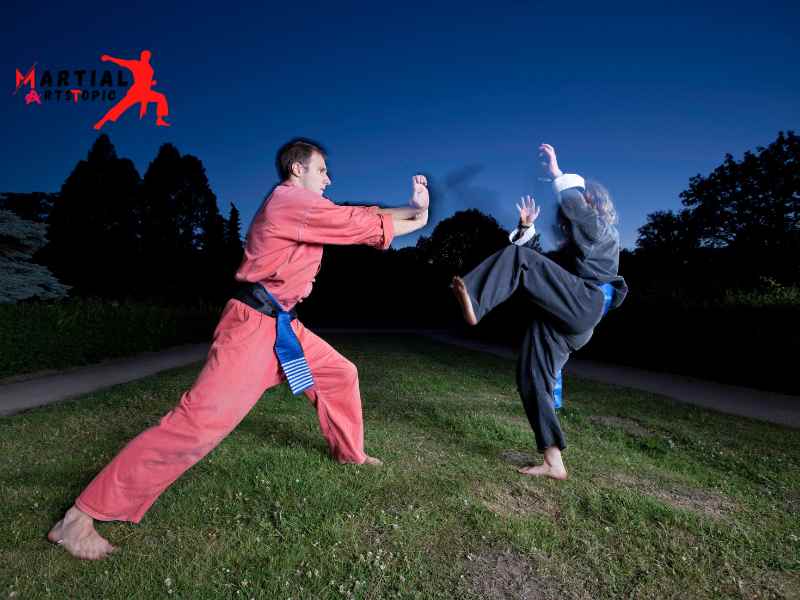
Unveiling the Ancient Power of Xingyiquan
What is Xingyiquan? Xingyiquan, also known as “Mind-Form Boxing,” is a traditional Chinese martial art that focuses on imitating the movements of animals. Originating from the concept of Wu Xing, or the Five Elements, Xingyiquan incorporates powerful and direct techniques that emulate the characteristics of metal, wood, water, fire, and earth. This martial art emphasizes explosive, linear movements and is renowned for its effectiveness in both self-defense and cultivating internal strength. With a history dating back centuries, Xingyiquan is a fascinating practice that offers a unique insight into the traditional martial arts of China.
What is Xingyiquan?
What is Xingyiquan? Xingyiquan, also known as “Form-Intention Fist,” is a traditional Chinese martial art that focuses on aggressive, linear movements and powerful strikes. It is categorized as one of the internal styles of Chinese martial arts, emphasizing the cultivation of internal energy (qi) for combat effectiveness. Xingyiquan is renowned for its five basic movements, which imitate the aggressive and rapid nature of the tiger, the agile and evasive movements of the monkey, the solid and sturdy nature of the bear, the swift and precise actions of the bird, and the elusive and sudden strikes of the dragon. This martial art is not only a means of self-defense, but also a way to promote health, discipline, and mental focus. Are you interested in delving deeper into the world of Xingyiquan?
The History and Origins of Xingyiquan: Unveiling its Ancient Roots
The History and Origins of Xingyiquan: Unveiling its Ancient Roots Xingyiquan, also known as “Form-Intention Boxing,” is a traditional Chinese martial art that has a rich history and deep-rooted origins. This highly powerful style of martial arts focuses on the cultivation of internal energy and the harmonization of mind and body. In this blog post, we will delve into the fascinating history and origins of Xingyiquan, shedding light on its ancient roots.
Origins in Ancient China
Xingyiquan traces its roots back to the Ming Dynasty (1368 – 1644) in ancient China. We believe it to have been derived from the teachings of Yue Fei, a renowned general and military strategist during the Song Dynasty (960 – 1279). Yue Fei is said to have developed Xingyiquan as a means to enhance the combat skills and physical strength of his soldiers.
The Five Elements Theory
At the core of Xingyiquan is the Five Elements Theory, which forms the foundation of its techniques and principles. These five elements, namely metal, wood, water, fire, and earth, are believed to represent different aspects of the human body and its movements. Each element corresponds to specific martial arts techniques, enabling practitioners to understand and utilize their energy effectively.
Three Internal Harmonies
In addition to the Five Elements Theory, Xingyiquan also emphasizes the concept of the Three Internal Harmonies: the harmony of the body, the harmony of the mind, and the harmony of the intent. These harmonies aim to synchronize the physical movements, mental focus, and intention of the practitioner, allowing for maximum efficiency and power in combat.
The Influence of Daoism and Chinese Philosophy
Daoism and Chinese philosophy deeply influenced Xingyiquan, incorporating their principles and concepts into its practice. The Daoist belief in the natural flow of energy and the importance of balance and harmony greatly aligns with the philosophy of Xingyiquan. This connection to Daoism and Chinese philosophy gives Xingyiquan a unique spiritual dimension that sets it apart from other martial arts styles.
Spread and Development
Over the centuries, Xingyiquan spread across China, developing and adapting to various regional styles and influences. It gained popularity among martial arts enthusiasts and practitioners for its effectiveness in combat and its holistic approach to physical and mental development. From its humble origins in ancient China, Xingyiquan has grown into a respected martial art practiced by individuals around the world.
Modern Xingyiquan
In modern times, Xingyiquan continues to thrive as a martial art and a means of personal development. Its practical self-defense techniques and emphasis on internal energy cultivation make it a popular choice for individuals seeking to improve their physical fitness, mental focus, and overall well-being. With its ancient roots and timeless wisdom, Xingyiquan remains a valuable treasure in the realm of martial arts.
Xingyiquan for Self-Defense: Practical Techniques and Strategies
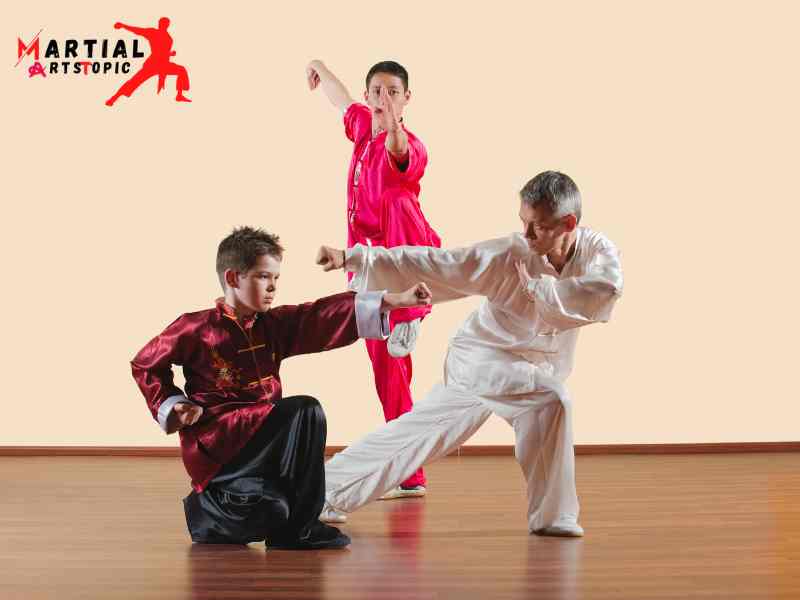
Xingyiquan for Self-Defense: Practical Techniques and Strategies Xingyiquan, also known as Xing Yi Quan or Hsing I Chuan, is a traditional Chinese martial art that has gained popularity worldwide. Known for its practicality and effectiveness in self-defense, Xingyiquan is a martial art that focuses on direct and explosive movements, making it an excellent choice for those looking to enhance their self-defense skills.
The practical techniques and strategies of Xingyiquan and how they can be applied in real-life self-defense situations. Whether you are a martial arts enthusiast or simply someone interested in personal safety, this article will provide you with valuable insights into the world of Xingyiquan.
Techniques
- Five Elements: Central to Xingyiquan are the Five Elements – Metal, Wood, Water, Fire, and Earth. Each element represents a specific body posture and attack technique. By mastering these elements, practitioners of Xingyiquan can effectively counter various attacks and neutralize their opponents.
- Four Gates: Xingyiquan emphasizes four major angles of attack, known as the Four Gates – Peng (ward-off), Lu (roll-back), Ji (press), and An (push). These gates provide a solid foundation for effective self-defense, allowing practitioners to efficiently defend themselves against different types of attacks.
- Twelve Animals: One unique aspect of Xingyiquan is the incorporation of twelve animal forms, each mimicking the characteristics and fighting techniques of different animals. From the fierce Tiger to the agile Dragon, these animal forms enhance a practitioner’s adaptability and versatility in self-defense scenarios.
Strategies
- Directness: Xingyiquan promotes direct and linear movements, designed to close the distance between the practitioner and the opponent swiftly. By utilizing explosive power and quick footwork, practitioners can launch powerful attacks while minimizing the opportunity for the opponent to counter.
- Timing and Rhythm: Timing and rhythm play a crucial role in Xingyiquan. Practitioners learn to read their opponent’s movements and exploit the gaps in their defense. By understanding the rhythm of an attack, a Xingyiquan practitioner can effectively counter and seize control of the situation.
- Internal Strength: Xingyiquan places great emphasis on developing internal strength, known as Neigong. They cultivate this internal power through specific breathing techniques, body alignment, and mental focus. The development of internal strength not only enhances a practitioner’s physical abilities but also promotes mental clarity and calmness during high-pressure situations.
Xingyiquan for Self-Defense
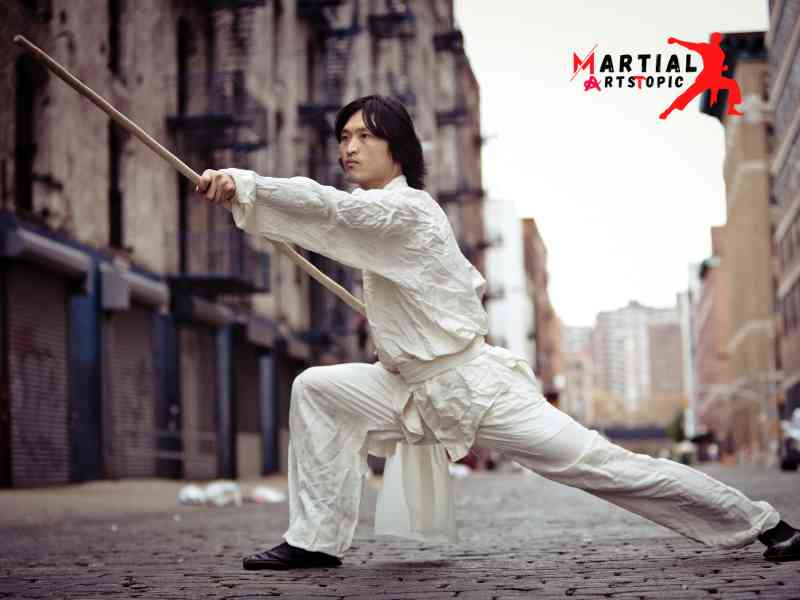
Xingyiquan’s practicality in self-defense lies in its focus on simplicity, efficiency, and adaptability. By honing the techniques and strategies mentioned above, individuals can gain the confidence and skills necessary to protect themselves in real-life situations.
Moreover, Xingyiquan’s emphasis on internal strength and mental focus provides practitioners with a holistic approach to self-defense. It trains not only the body but also the mind, enabling individuals to stay calm and composed in potentially dangerous situations.
Training Methods and Exercises
Welcome to our comprehensive guide on Xingyiquan, a traditional Chinese martial art known for its powerful and efficient training methods. In this article, we will delve into the fascinating world of Xingyiquan and explore its unique training techniques and exercises. Whether you are a martial arts enthusiast or simply curious about different training methods, this article will provide valuable insights into the art of Xingyiquan.
Understanding Xingyiquan
Xingyiquan, also known as “Form-Intention Fist,” is an internal martial art that originated in China. It focuses on developing explosive power, agility, and mental focus through systematic training methods. Xingyiquan is based on the principles of the Five Elements (Wu Xing) theory, which includes metal, water, wood, Fire, and earth.
Key Training Methods in Xingyiquan
- Five Elements Fists: Xingyiquan practitioners train by practicing various striking techniques based on the Five Elements theory. These techniques involve imitating the movements and characteristics of different animals or natural elements to enhance power and adaptability.
- San Ti Shi (Three Body Posture): San Ti Shi is the fundamental standing posture in Xingyiquan. It aims to strengthen the lower body, develop stability, and cultivate internal energy. Practitioners hold the posture for an extended period, gradually building strength and balance.
- Pi Quan (Splitting Fist): Pi Quan is a dynamic and explosive punching technique in Xingyiquan. It emphasizes speed, accuracy, and the ability to generate power from the waist. Practitioners perform a series of rapid punches while maintaining proper body alignment.
- Zuan Quan (Drilling Fist): Zuan Quan focuses on drilling or penetrating strikes with the fists. This technique enhances precision, penetration, and internal power development. Practitioners aim to generate power through coordinated movements and body mechanics.
- Beng Quan (Crushing Fist): Beng Quan is a powerful striking technique that emphasizes explosive force and rapid contraction. The practitioner generates energy from the ground, channels it through the body, and releases it in a forceful strike. This technique cultivates strength, speed, and agility.
Essential Exercises in Xingyiquan
- Five Elements Stances: Xingyiquan includes specific stances that imitate the movements and characteristics of the Five Elements. These stances, such as the Dragon, tiger, monkey, horse, and chicken, help develop strength, flexibility, and balance.
- Continuous Footwork: Xingyiquan practitioners engage in various footwork drills to enhance agility, coordination, and quickness. These exercises involve stepping patterns, pivoting, and transitioning between different stances, promoting fluidity and adaptability in combat.
- Partner Drills: Xingyiquan incorporates partner drills to simulate real combat situations. These drills focus on timing, distance control, and the application of techniques in a dynamic environment. Practitioners learn to react instinctively while maintaining proper structure and footwork.
- Internal Training: Xingyiquan places great emphasis on internal training, which includes Qigong exercises, meditation, and breathing techniques. These practices enhance mental focus, relaxation, and the cultivation of internal energy (Qi), vital for achieving optimal performance and health.
The Health Benefits of Practicing Xingyiquan
The Health Benefits of Practicing Xingyiquan, also known as “Form-Intention Boxing,” is a traditional Chinese martial art that has been practiced for centuries. It combines both physical exercise and mental discipline, making it an excellent holistic practice for improving health and well-being. In this blog post, we will explore the various health benefits of practicing Xingyiquan.
- Improved Physical Fitness: Xingyiquan involves a series of dynamic movements, including punches, kicks, and footwork. These movements help to increase cardiovascular endurance, strength, and flexibility. Regular practice of Xingyiquan can lead to improved overall physical fitness and stamina.
- Increased Mental Focus: Xingyiquan is not only a physical practice but also a mental one. Practitioners are required to concentrate deeply on their movements, breathing, and intentions. This intense focus helps to improve mental clarity and concentration, which can be beneficial in all aspects of life.
- Stress Relief: Like many forms of martial arts, Xingyiquan provides an outlet for stress and tension. The physical movements and mental focus required in Xingyiquan can help to release built-up stress and promote a sense of calm and relaxation. Regular practice can help individuals better manage stress in their daily lives.
- Improved Balance and Coordination: Xingyiquan involves a series of intricate movements and stances that require balance and coordination. By practicing these movements regularly, individuals can improve their overall balance and coordination skills, which can be beneficial in various physical activities and everyday life.
- Enhanced Body Awareness: Xingyiquan emphasizes body alignment and proper posture throughout the practice. By becoming more aware of their body and how it moves, practitioners can improve their overall body awareness and alignment, leading to improved posture and reduced risk of injury.
- Boosted Immune System: Regular exercise, such as practicing Xingyiquan, has been shown to boost the immune system. The combination of physical movement, deep breathing, and mental focus in Xingyiquan can help to improve circulation, oxygenate the body, and enhance the overall functioning of the immune system.
- Increased Energy Levels: Xingyiquan is a dynamic and energetic martial art that requires constant movement and exertion. Regular practice can help to increase energy levels and combat feelings of fatigue and lethargy. By engaging in this practice, individuals can experience a natural boost in their energy levels, leading to increased productivity and overall well-being.
Getting Started with Xingyiquan: Essential Tips for Beginners
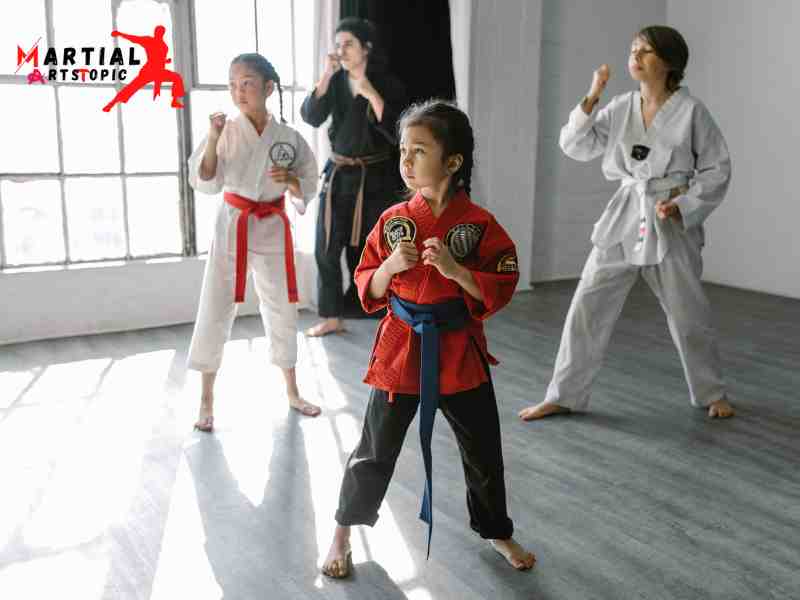
Getting Started with Xingyiquan: Essential Tips for Beginners Are you intrigued by the ancient Chinese martial art of Xingyiquan? Known for its powerful and explosive movements, Xingyiquan, also known as “Form and Intent Fist,” is a martial art that combines mind and body coordination with practical self-defense techniques. Whether you are a beginner or have some experience in other martial arts, this guide will provide you with essential tips to help you get started with Xingyiquan.
Understand the Basics of Xingyiquan
Xingyiquan is based on the five elements theory of Chinese philosophy: metal, water, wood, Fire, and earth. Each element represents unique characteristics and movements. It is essential to understand the fundamental principles and concepts of Xingyiquan before diving into the techniques. Familiarize yourself with the stances, footwork, and hand techniques that form the foundation of this martial art.
Find a Qualified Instructor
To learn Xingyiquan effectively, it is crucial to find a qualified instructor who can guide you through the proper techniques and principles. Look for a certified Xingyiquan instructor who has a solid background in the art and can provide personalized instruction based on your level of experience and fitness. A knowledgeable instructor will help you develop a strong foundation and correct any mistakes in your form.
Start with Warm-Up Exercises
Like any physical activity, warming up before practicing Xingyiquan is essential. Begin your training session with warm-up exercises to prepare your body and prevent injuries. Incorporate stretching, joint rotations, and light cardiovascular exercises to increase blood flow, improve flexibility, and enhance overall performance. Warming up also helps to focus your mind and get into the right mindset for training.
Master the Five Fists
Xingyiquan is known for its five fundamental fists: Pi (Splitting), Zuan (Drilling), Beng (Crushing), Pao (Pounding), and Heng (Crossing). Each fist represents a specific attack or defense technique. Spend time practicing and mastering each fist individually, paying attention to proper body alignment, power generation, and accuracy. Once you have a good understanding of the five fists, you can start combining them into fluid and seamless movements.
Train with a Partner
Xingyiquan is not just about individual practice; it also involves training with a partner to develop practical combat skills. Find a training partner of similar skill level and work on drills that simulate real-life combat scenarios. Practice techniques such as strikes, blocks, and counters, focusing on timing, distance, and coordination. Training with a partner will help you develop the necessary reflexes and improve your overall martial arts skills.
Be Patient and Consistent
Learning any martial art takes time and dedication, and Xingyiquan is no exception. Be patient with yourself and understand that progress comes with consistent practice. Set realistic goals and work towards them one step at a time. Consistency is key, so make a training schedule and stick to it. Even if you can only dedicate a few hours a week, regular practice will yield significant results over time.
Embrace the Mind-Body Connection
Xingyiquan emphasizes the integration of mind and body. Cultivate a strong mind-body connection by focusing on your breathing, visualization, and intention during practice. Concentrate on your movements, be aware of your body’s alignment, and strive for fluidity and harmony. The more you can synchronize your mind and body, the more powerful and effective your Xingyiquan techniques will become.
Xingyiquan Weapons: The Deadly Arsenal of this Martial Art
Xingyiquan Weapons: The Deadly Arsenal of this Martial Art If you are a fan of martial arts and want to delve into the fascinating world of Xingyiquan, then you are in for a treat! Known for its powerful and explosive techniques, Xingyiquan is a Chinese martial art that has gained popularity around the world. One of the unique aspects of Xingyiquan is its extensive array of weapons that practitioners used to enhance their combat skills. In this blog post, we will inspect the deadly arsenal of Xingyiquan and explore the weapons that make this martial art so intriguing and effective.
Jian (Straight Sword)
The Jian, also known as the straight sword, is one of the most iconic weapons in Chinese martial arts. In Xingyiquan, the Jian is used to develop precision, speed, and agility. The techniques involved in wielding the Jian require a deep understanding of timing and footwork, making it a perfect weapon for enhancing one’s martial arts skills.
Dao (Broadsword)
The Dao, or broadsword, is a weapon that is commonly associated with Xingyiquan. With its curved blade and single-edged design, they knew the Dao for its devastating cutting power. Practitioners of Xingyiquan use the Dao to train their strength, coordination, and reflexes. The fluid movements and dynamic footwork involved in Dao training make it an exhilarating weapon to master.
Qiang (Spear)
The Qiang, or spear, is a long-range weapon that plays a significant role in Xingyiquan. With its ability to strike from a distance, the Qiang teaches practitioners how to maintain control over their opponents while staying out of harm’s way. The techniques involved in Qiang training focus on precision, timing, and footwork, making it an essential weapon for any Xingyiquan practitioner.
Gun (Staff)
The Gun, or staff, is a versatile weapon that can be used for offense and defense. In Xingyiquan, the Gun is used to develop strength, flexibility, and coordination. With its long reach and ability to strike from multiple angles, the Gun is an excellent weapon for training both physical and mental discipline.
Pu Dao (Horse Cutter)
The Pu Dao, or horse cutter, is a unique weapon that is exclusive to Xingyiquan. With its crescent-shaped blade, the Pu Dao is designed to deliver powerful and devastating strikes. The techniques involved in Pu Dao training focus on speed, agility, and precision. Mastering the Pu Dao requires a deep understanding of body mechanics and footwork, making it a challenging yet rewarding weapon to wield.
The Different Styles of Xingyiquan: Which One is Right for You
The Different Styles of Xingyiquan: Which One is Right for You Xingyiquan, also known as Xingyi Quan or “Form and Will Boxing,” is a traditional Chinese martial art that focuses on explosive power, speed, and directness. With its roots dating back over 300 years, Xingyiquan has evolved into several styles, each with its unique characteristics and techniques. In this blog post, we will delve into the various styles of Xingyiquan and help you determine which one is the right fit for you.
Hebei Style Xingyiquan
Originating from the Hebei province of China, the Hebei style is one of the most widely practiced styles of Xingyiquan. It emphasizes powerful punches, linear footwork, and firm stances. Practitioners of Hebei style focus on developing internal power, known as “neijin,” and explosive movements that mimic the movements of animals, such as the dragon and tiger.
Shanxi Style Xingyiquan
Hailing from the Shanxi province, the Shanxi style of Xingyiquan is characterized by its emphasis on “santishi” or the “three-body posture.” This style focuses on the cultivation of internal energy, coordination of body movements, and the integration of different body parts to generate maximum power. Shanxi style practitioners also incorporate more circular movements and footwork into their practice.
Henan Style Xingyiquan
Originating from the Henan province, the Henan style of Xingyiquan places a strong emphasis on practical self-defense applications. We know it for its direct, aggressive, and explosive techniques that aim to neutralize opponents quickly. Henan style practitioners focus on close-quarter combat, hand strikes, and powerful kicks, making it an effective style for real-life self-defense situations.
Song Style Xingyiquan
They named the Song style of Xingyiquan after its founder, Song Shirong, who combined elements from different styles to create a unique hybrid system. This style emphasizes fluidity, flexibility, and agility while maintaining the explosive power characteristic of Xingyiquan. Song style practitioners focus on smooth transitions between movements, making it suitable for practitioners who prefer a more flowing and dynamic approach.
Guangdong Style Xingyiquan
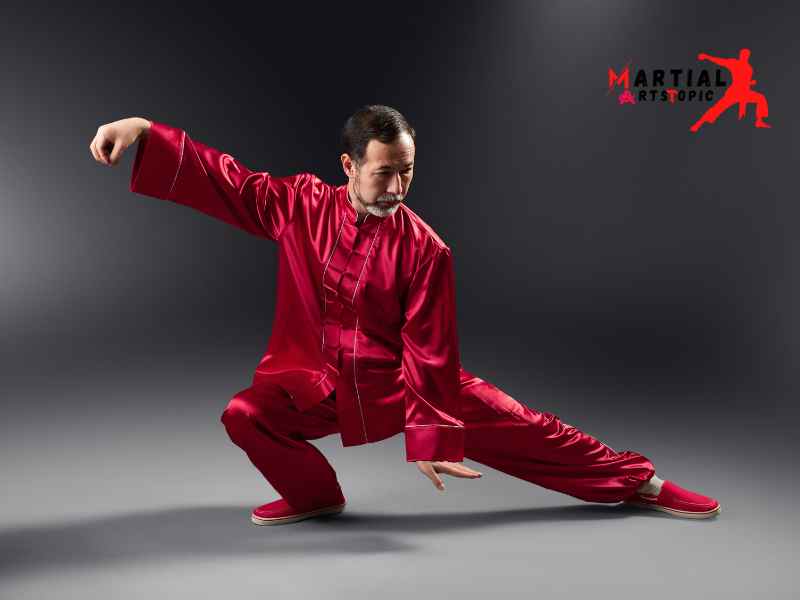
Originating from the Guangdong province of China, the Guangdong style of Xingyiquan incorporates elements from both Xingyiquan and Wing Chun. It emphasizes close-quarter combat, rapid hand strikes, and the efficient use of energy. Guangdong style practitioners focus on precise timing, sensitivity to their opponent’s movements, and utilizing short-range power to overcome their opponents.
Now that you are familiar with the different styles of Xingyiquan, how do you determine which one is right for you? The answer lies in your personal preferences, goals, and training objectives. Consider the following factors:
- Your Training Goals: Are you training for self-defense, fitness, or competition? Different styles may cater to different objectives, so choose one that aligns with your goals.
- Your Physical Attributes: Each style may have its emphasis on certain techniques and body movements. Consider your physical attributes, such as strength, flexibility, and agility, and choose a style that suits your strengths.
- Personal Preference: Do you prefer explosive and direct techniques or more flowing and circular movements? Consider your personal preference and choose a style that resonates with you.
- Availability of Training: Consider the availability of instructors and training facilities for each style in your area. It’s essential to have access to experienced instructors to guide you in your Xingyiquan journey.
Ultimately, the right style of Xingyiquan for you is the one that you enjoy practicing and aligns with your goals. Remember, Xingyiquan is a journey of self-discovery, personal growth, and martial arts mastery. Embrace the style that speaks to you and embark on your Xingyiquan adventure today!
Choosing the right style of Xingyiquan depends on your personal preferences, goals, and physical abilities. Consider what aspects of martial arts appeal to you the most – whether it’s power and explosiveness, agility and footwork, internal energy cultivation, self-defense techniques, or a harmonious mind-body connection. It’s also worth noting that some schools may incorporate elements from different styles, offering a well-rounded training experience.
Regardless of the style you choose, practicing Xingyiquan can bring numerous benefits to your overall well-being. It improves physical fitness, coordination, mental focus, and cultivates discipline and perseverance. So, if you’re ready to embark on a journey of self-discovery and martial arts mastery, consider exploring the different styles of Xingyiquan and find the one that resonates with you.
In conclusion
What is Xingyiquan? Xingyiquan is a powerful and effective martial art that emphasizes simplicity, directness, and efficiency in combat. Its unique training methods and principles make it a popular choice for both self-defense and physical fitness. Through the practice of Xingyiquan, individuals can develop not only their physical strength and coordination but also their mental focus and discipline. Whether one’s goal is to improve their martial arts skills or enhance their overall well-being, Xingyiquan offers a holistic approach that can benefit practitioners of all levels. Embracing the essence of this ancient Chinese martial art can lead to personal growth and a deeper understanding of the mind-body connection. With its rich history and practical techniques, Xingyiquan continues to be a valuable practice for those seeking both physical and mental development.
